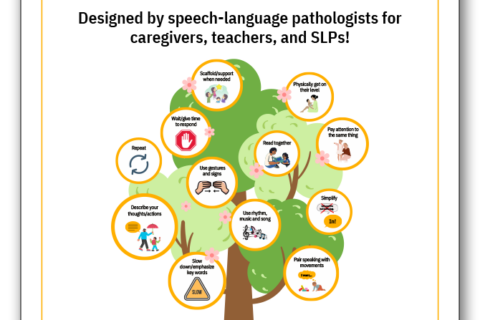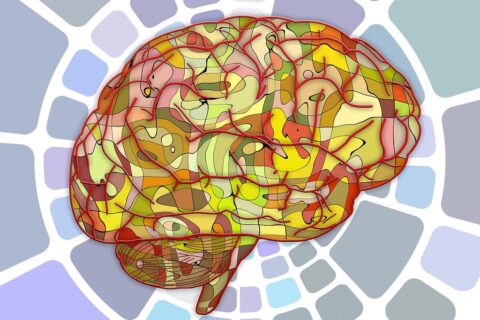What Is a Lisp?
As children develop and age, they experience many changes in their ability to produce sounds and words. Whether making cooing sounds around 3 months of age or speaking many words within sentences and stories by the age of 4, most children follow a similar developmental progression.
However, some children cannot accurately produce specific sounds and words at the expected age range. These articulation errors can be particularly frustrating for children when others cannot understand what they are saying.
An example of an articulation error is a lisp. This blog will detail the different types of lisps, what causes them, and how speech therapy can help.
What Is a Lisp?
A lisp occurs when a person has difficulty achieving the correct tongue position for certain sounds. A lisp typically affects the sounds, “S” and “Z;” however, a lisp may also affect other sibilant sounds, such as “SH, CH, J.” A lisp can affect the clarity of one’s speech and can lead to communication breakdowns, especially in children.
Sounds that can be affected by a lisp occur very frequently in English. Therefore, many words can be tricky to say for a person who produces sounds with a lisp, and when words have a lot of sounds that are difficult to produce, it may be even harder for the speaker!
What Causes a Lisp?
If a lisp is not being produced on purpose (e.g., when a person from Spain is speaking Spanish, they intentionally produce the “s” sound with an interdental lisp,) when accurate production of the sound is expected, and when the speech sound errors negatively impact intelligibility and a person’s ability to be understood, a speech sound disorder or articulation disorder may be diagnosed. These disorders fall under one of two categories: organic or functional. Functional speed sound disorders stem from an unknown cause (idiopathic). Organic speech sound disorders, on the other hand, stem from an underlying motor/neurological, structural, or sensory/perceptual cause.
That said, there are several reasons a child may have a lisp when producing sounds. Oftentimes, a lisp is caused because the musculature of the speech mechanism (tongue, teeth, jaw, and lips) is still maturing.
In other instances, a lisp could occur because of an underlying tongue thrust, which tongue position at rest and when moving for speaking and swallowing. For example, children who have difficulty breathing through their noses may have structural differences which result in a lisp, because it is easier for the child to approximate target sounds, like “S” and “Z” when moving the tongue into a more forward or anterior position. A short lingual frenulum, also more commonly known as a “tongue-tie,” can also be an underlying factor of a lateral lisp. A short lingual frenum is a structural difference of the mouth which occurs when the tongue is more closely connected or attached to the floor of the mouth. This can limit movement and affect speech in some cases.
A speech language pathologist can discern the cause of a lisp and create a treatment plan tailored to an individual’s specific needs.
Types of Lisps
There are several types of lisps. Lisping more commonly affects the “S” and “Z” sounds, but it may also affect “SH, CH, J.” The two most common types include:
Frontal (Interdental) lisp: A frontal lisp, also referred to as an interdental lisp, occurs when the tongue protrudes through the front teeth during production of ‘s’ and ‘z’ resulting in a ‘th’ sound. It may also affect “SH, CH, and J” sounds. Frontal lisps are considered developmentally appropriate until approximately 3-4 years of age, after which many disappear. Talk to your pediatrician about a referral to a speech language pathologist if a frontal lisp persists past age 4.
Lateral lisp: A lateral lisp occurs when airflow is directed over the sides instead of the center of the tongue when producing sounds, such as “S, Z, SH, CH, J.” This results in a “slushy” or less precise sound quality and can affect a listener’s ability to understand what a person is trying to say. Lateral lisps are not considered a characteristic of typical development and benefit from speech-language intervention.
Additional types of lisps include a palatal lisp (i.e., tongue touches the roof of the mouth during production of sounds when it is not expected to) and a dental lisp (i.e., tongue presses against the front teeth during production of sounds when it is not expected to h).
How Can I or My Child get Rid of a Lisp?
At first, a toddler with a lisp may produce sounds that sound cute. However, as they grow and the lisp remains prominent, they may be teased, bullied, or made fun at school or in other public places. It is common for children with lisps to experience self-esteem and self-confidence issues.
Lisps can affect a person’s overall speech intelligibility and can lead to communication breakdown, as clarity of speech can be impacted. A speech language pathologist is specifically trained to address speech sound errors at their root cause and create a treatment plan tailored to each client’s individual needs.
If a child is experiencing a tongue thrust, the speech therapist will design and teach you and your child a series of exercises to remediate the tongue thrust when swallowing and speaking. In other cases, children may only require speech intervention to learn correct manner of airflow and tongue placement for affected sounds in isolation before practicing them in words, sentences, reading, and conversation. Without the presence of co-occurring disorders, skilled intervention with a speech pathologist for a lisp is usually quick, easy, and successful.
Treating Speech Sound Disorders at Open Lines®
While lisps can create communication difficulties in children, speech therapy is a quick, easy, and effective form of treatment. Every child is different, but desirable outcomes can usually be achieved in two-three months. Our licensed speech language pathologists ensure your child receives personalized treatment and a home exercise program to fit their needs.
Learn more about how we treat speech disorders. Contact us today by phone at (212) 430-6800, by email at [email protected], or through our contact form. If you are ready to take the next steps in treating a speech sound disorder, please request an appointment with us.
If you’re struggling with communication difficulties, it’s time to turn to Open Lines®. Contact us via phone (212-430-6800), email [email protected], or by filling out our convenient contact form. Improve your communication skills and unlock your potential with Open Lines® Speech and Communication in New York today!
Get in Touch With Open Lines®














